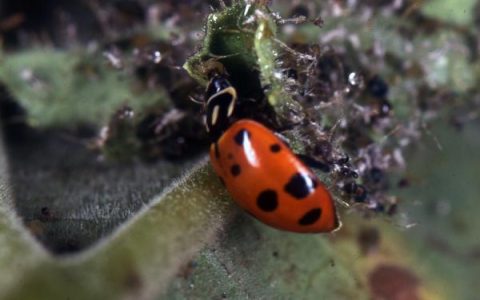Discovering small, dark insects in your bathroom can be unsettling. These pests are typically drawn to the unique conditions bathrooms offer, primarily moisture and organic matter. Identifying the specific insect is the first step towards effective control.
Common Little Black Bathroom Insects
Several types of small, dark insects are commonly found in bathrooms:
- Drain Flies (Moth Flies):
These are small, fuzzy flies, often grey or black, with moth-like wings. They breed in the organic sludge that accumulates in drains, plugholes, and overflow pipes. You'll often see them resting on walls near sinks, showers, or tubs.

- Fungus Gnats:
Resembling tiny mosquitoes, fungus gnats are dark, delicate flies. While often associated with overwatered houseplants, they can also thrive in bathrooms where mold or mildew is present, as their larvae feed on fungi.
- Springtails:
Minute, wingless insects that jump when disturbed, thanks to a spring-like appendage under their abdomen. Springtails are attracted to very damp environments, feeding on mold, mildew, and decaying organic matter. They can be found near leaky pipes, damp towels, or areas with condensation.
- Booklice (Psocids):
Very small, often translucent to greyish-black insects. They thrive in high humidity and feed on mold, fungi, and starchy materials. Look for them in damp areas, around pipework, or even on damp wallpaper.
- Small Black Ants:
Certain ant species, such as little black ants or pavement ants, may enter bathrooms in search of water or occasionally food debris (e.g., sugary residues from toiletries).
Why Are They In Your Bathroom?
The primary attractants for these insects in bathroom environments include:

- Moisture: Leaks, condensation, poor ventilation, and standing water create ideal humid conditions.
- Organic Debris: Hair, soap scum, skin cells, and other organic materials accumulating in drains, on surfaces, or in grout provide food sources.
- Mold and Mildew: A common consequence of high humidity, serving as a food source for several insect types.
- Dark, Undisturbed Areas: Spaces under sinks, behind toilets, or within wall cavities offer shelter.
Control and Prevention Strategies
Effective management involves eliminating their attractants and access points:
- Clean Drains Regularly: Use a stiff brush, drain cleaner, or a mixture of baking soda and vinegar followed by hot water to remove organic buildup from sink, shower, and tub drains.
- Reduce Moisture and Humidity:
- Ensure proper ventilation by using an exhaust fan during and after showers.
- Repair any leaking taps, pipes, or shower fixtures promptly.
- Wipe down wet surfaces and dry damp towels.
- Consider using a dehumidifier in chronically damp bathrooms.
- Thorough Cleaning: Regularly clean all bathroom surfaces, including floors, tiles, grout, and around the toilet and sink, to remove soap scum, hair, and potential food sources.
- Seal Entry Points: Caulk cracks and crevices around pipes, windows, baseboards, and fixtures to prevent insects from entering.
- Address Mold and Mildew: Clean any visible mold or mildew with appropriate bathroom cleaners. Addressing the underlying moisture issue is key to preventing regrowth.
- Check Houseplants: If you have houseplants in or near the bathroom, ensure they are not overwatered, as this can contribute to fungus gnat populations.
Persistent infestations may require professional pest control services for identification and targeted treatment.











